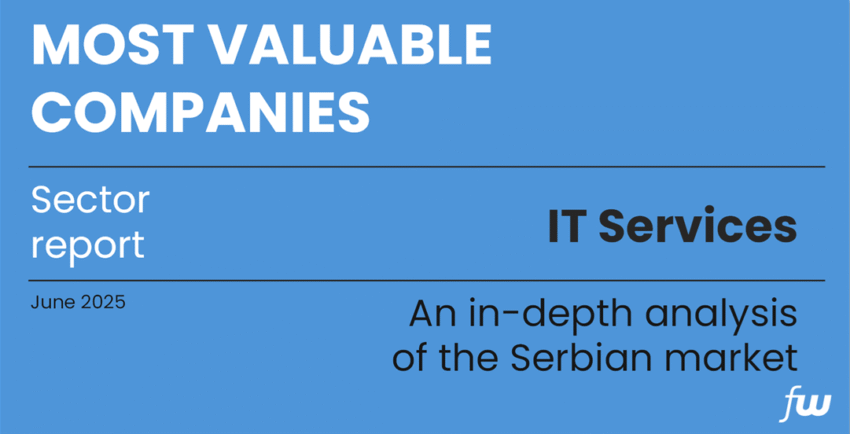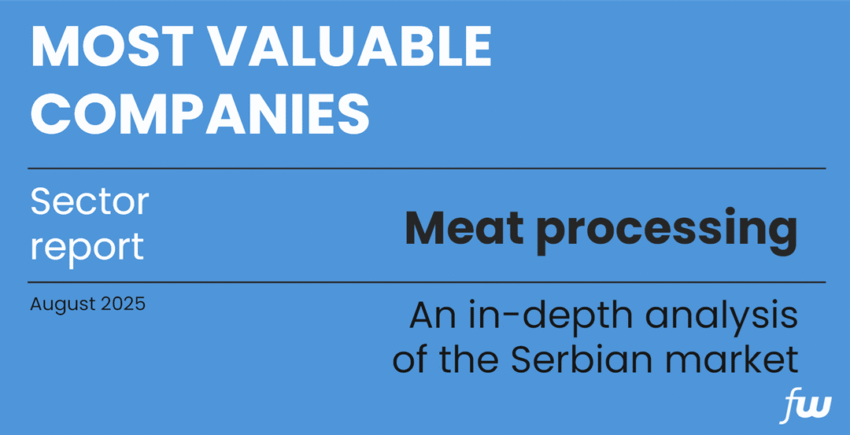Discover Which Companies Are Leading Serbia’s IT Services Sector
This week, we explored Serbia’s IT Services Sector (NACE 62) — a dynamic space marked by rapid expansion, evolving business models, and a growing gap between high-performing tech firms and those struggling to keep pace.
While revenue and net debt continue to influence valuations, our latest analysis reveals that profitability, business model, and growth sustainability increasingly define market leadership.
Let’s take a closer look at what the data tells us.
🔍 Key Insights from Our Analysis
✅ Top Valuation Leader
Smart Business Technologies leads the sector in overall valuation, supported by high revenues and a product-based model that allows for scalable growth. Its dominance reflects how owning intellectual property and platforms is rewarded more than pure outsourcing capacity.
✅ Profitability
Endava emerges as a clear outlier with an EBITDA margin of ~18%, reflecting strong operational efficiency and disciplined scaling. HTEC follows with an impressive ~14% margin, showcasing how strategic positioning and cost management can elevate performance.
✅ Revenue Growth
Smart Business Technologies leads the sector in year-over-year growth, outperforming its peers in this sector. HTEC also shows strong momentum, suggesting that profitable expansion is possible even in a highly competitive market.
✅ Growth outlier
Despite its global footprint, Microsoft Serbia shows relatively low local profitability, underperforming peers on operational metrics. Meanwhile, Orion Innovation and AIGO BS stand out with negative growth, raising concerns about their ability to adapt and scale sustainably.
✅ Sector Structure
EBITDA margins in the sector range between ~2% and ~18%, showcasing a clear tiering: high-margin tech leaders, solid mid-market players, and struggling outliers.
✅ Valuation Drivers
Valuations across the sector remain strongly tied to revenue size and net debt levels. However, multiples vary widely depending on the operating model — with product-driven and embedded solutions firms generally commanding a premium compared to pure software service providers.
✅ Undervalued Potential
Several smaller companies show promising growth potential, particularly those pivoting toward embedded systems or building proprietary platforms. These players may lack scale today, but their business models suggest long-term upside.
📈 The Bigger Picture
Serbia’s IT sector presents a wide spread in valuation and profitability. Product-led companies with scalable platforms and recurring revenue models enjoy higher multiples and more stable margins. In contrast, service-based firms — especially those tied to labor-intensive outsourcing — face more pressure on profitability.
At the same time, many companies are struggling to sustain the post-pandemic growth momentum, particularly those without clear product differentiation or dependent on legacy outsourcing models. The sector’s headwinds are beginning to show — and their long-term impact may soon become more visible in financial results.
🔮 Looking Ahead
This analysis is based on historical financial data from FY 2024. As Serbia’s IT services sector responds to global digital trends, labor market dynamics, and evolving client needs, we expect to see further divergence in strategy, valuation, and financial outcomes.
📊 Explore the Full Report
Want to dive deeper into valuation rankings, growth metrics, and company benchmarks in Serbia’s IT industry?
Check out the full report here: Most Valuable Companies – IT Services
🔎 Which sector should we analyze next? Let us know in the comments or send us a DM!
#Valuation #MarketAnalysis #ITServices #Serbia #FinanceWise



